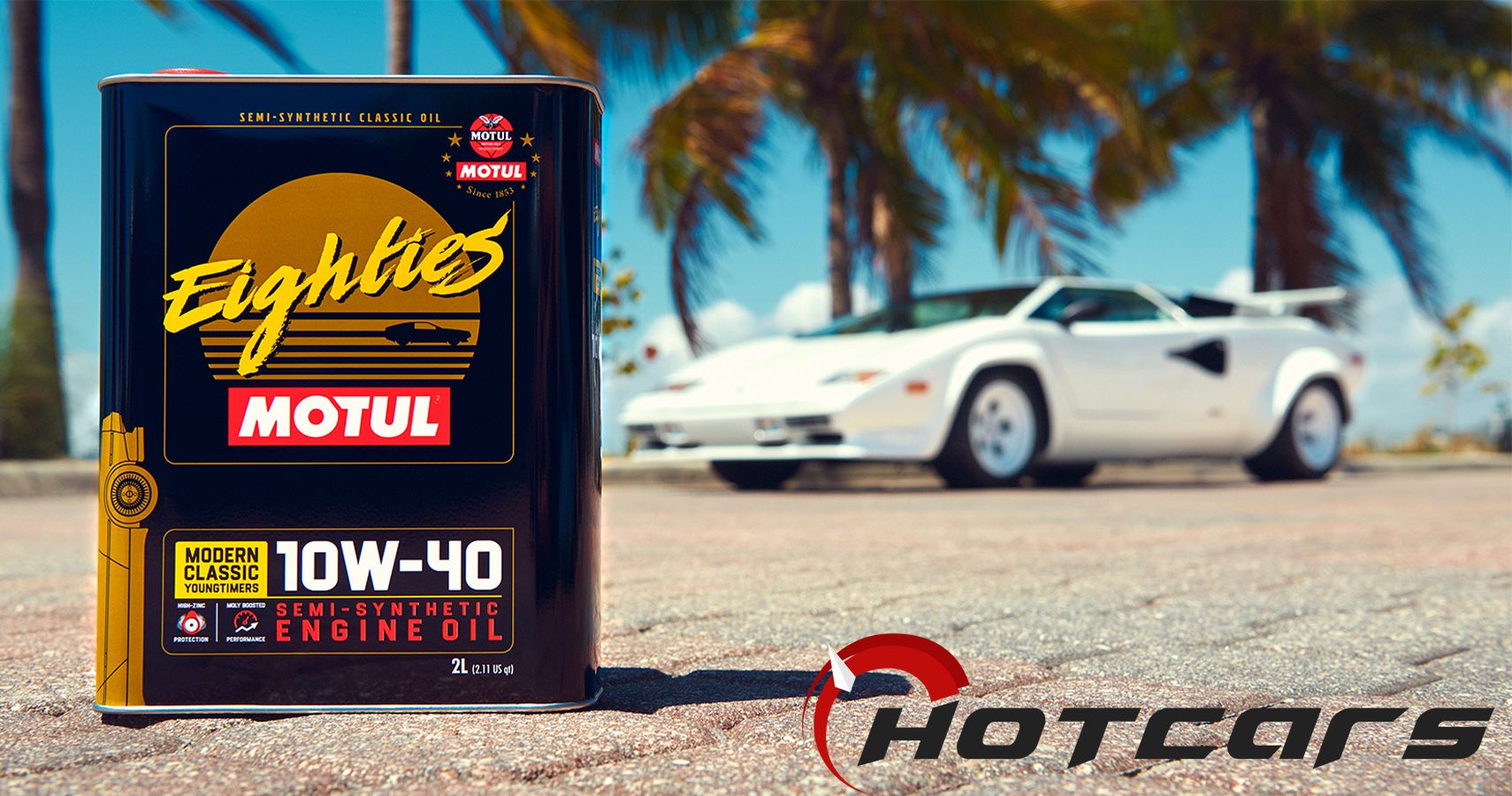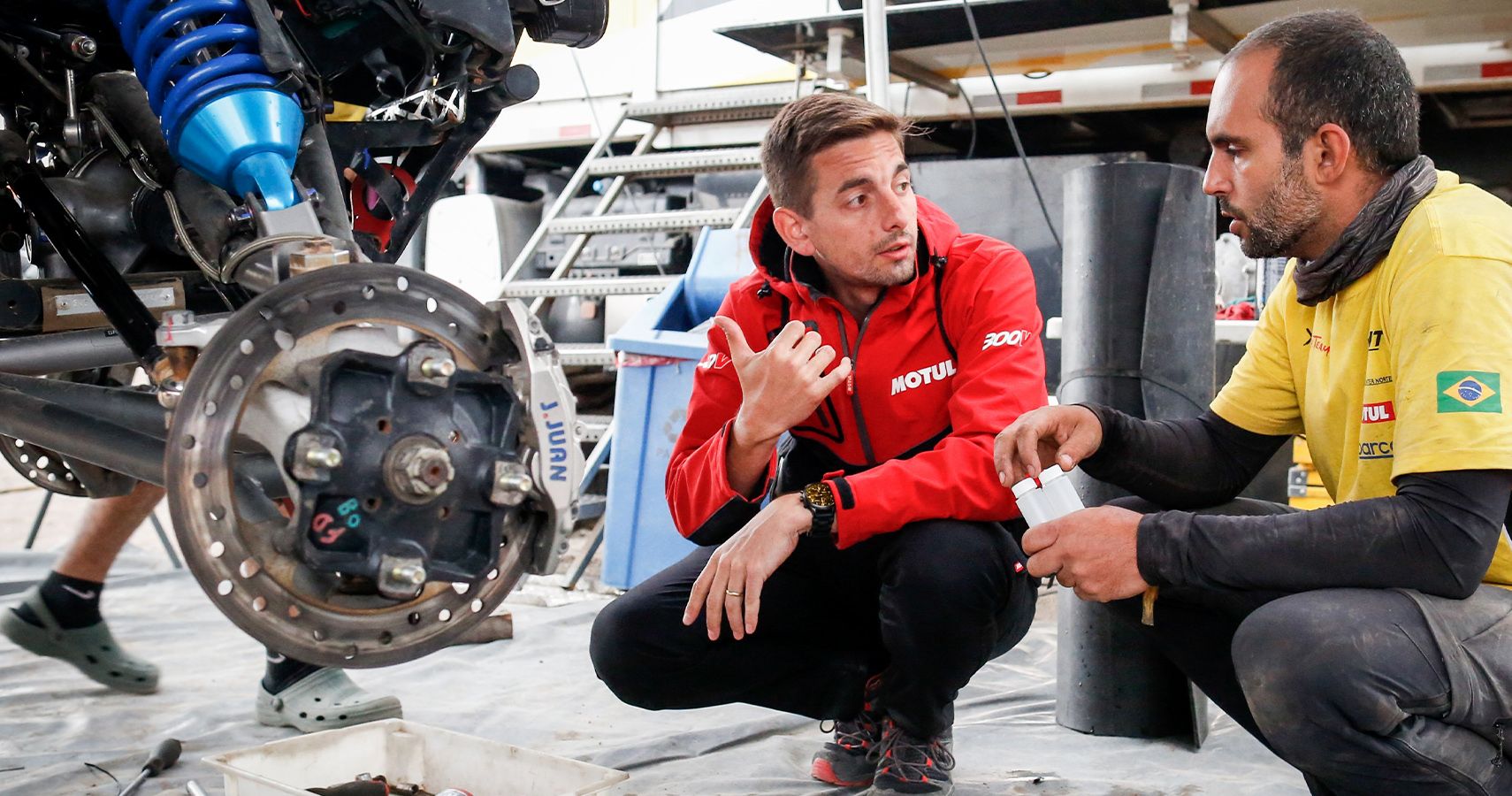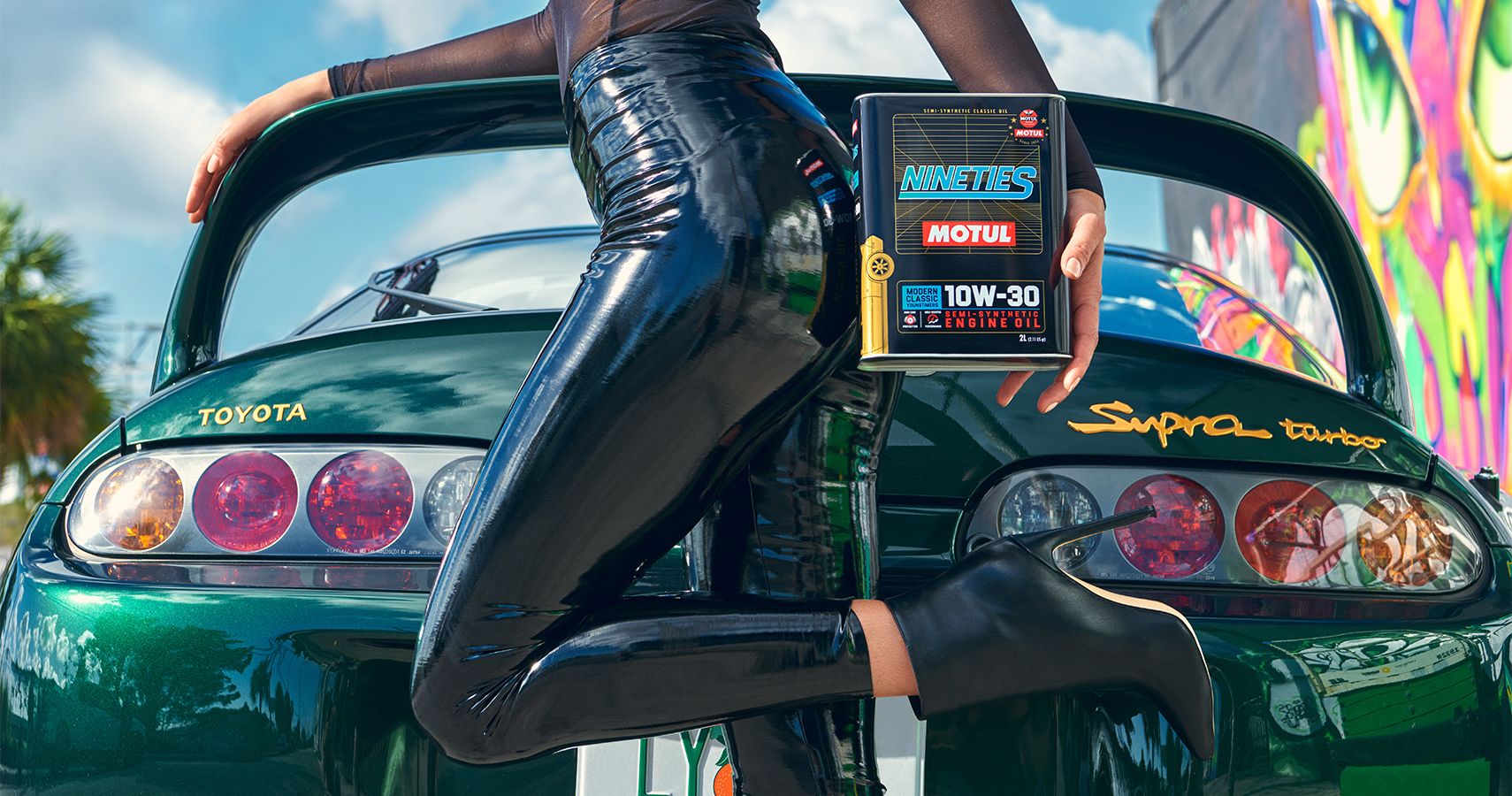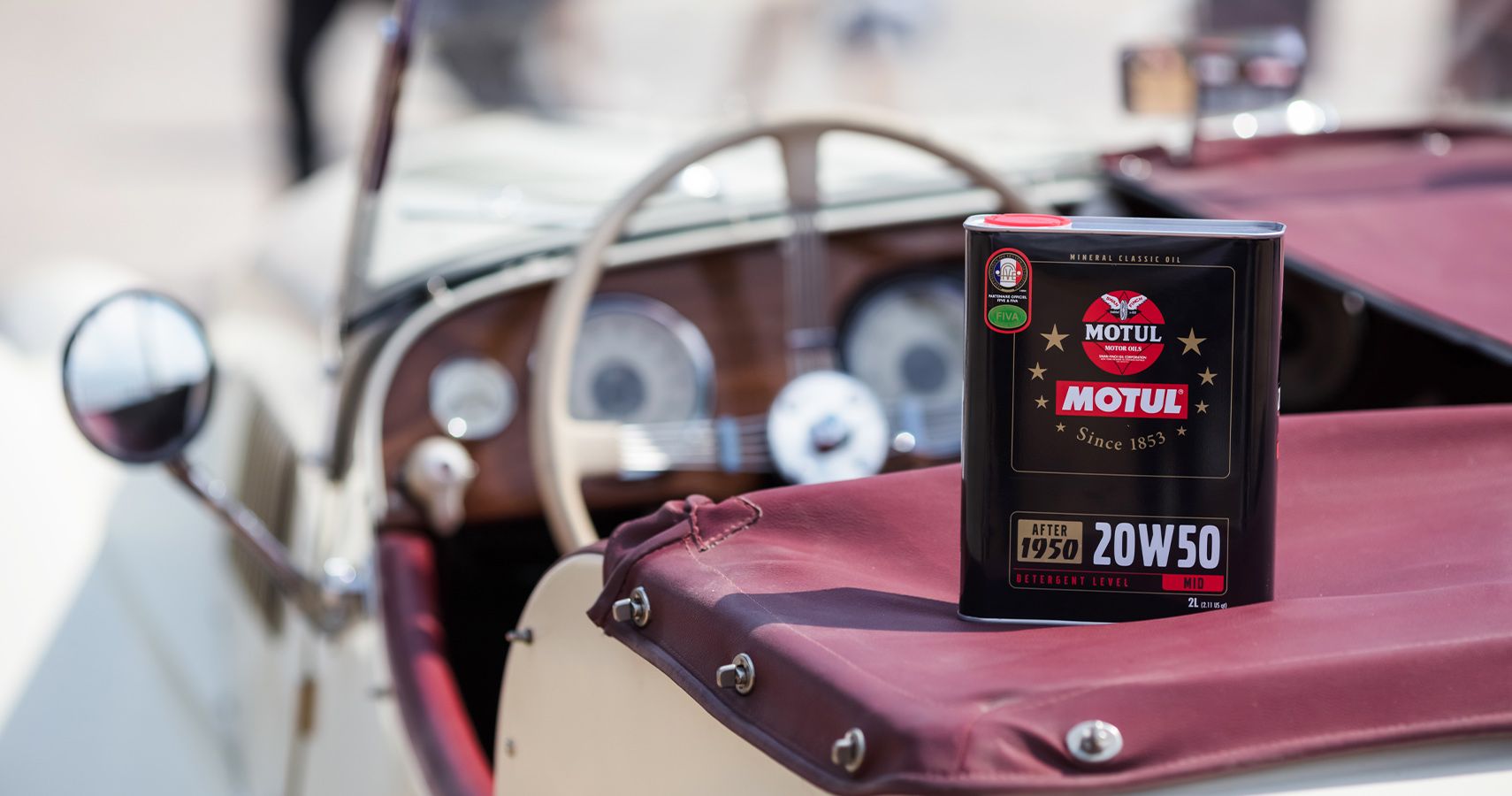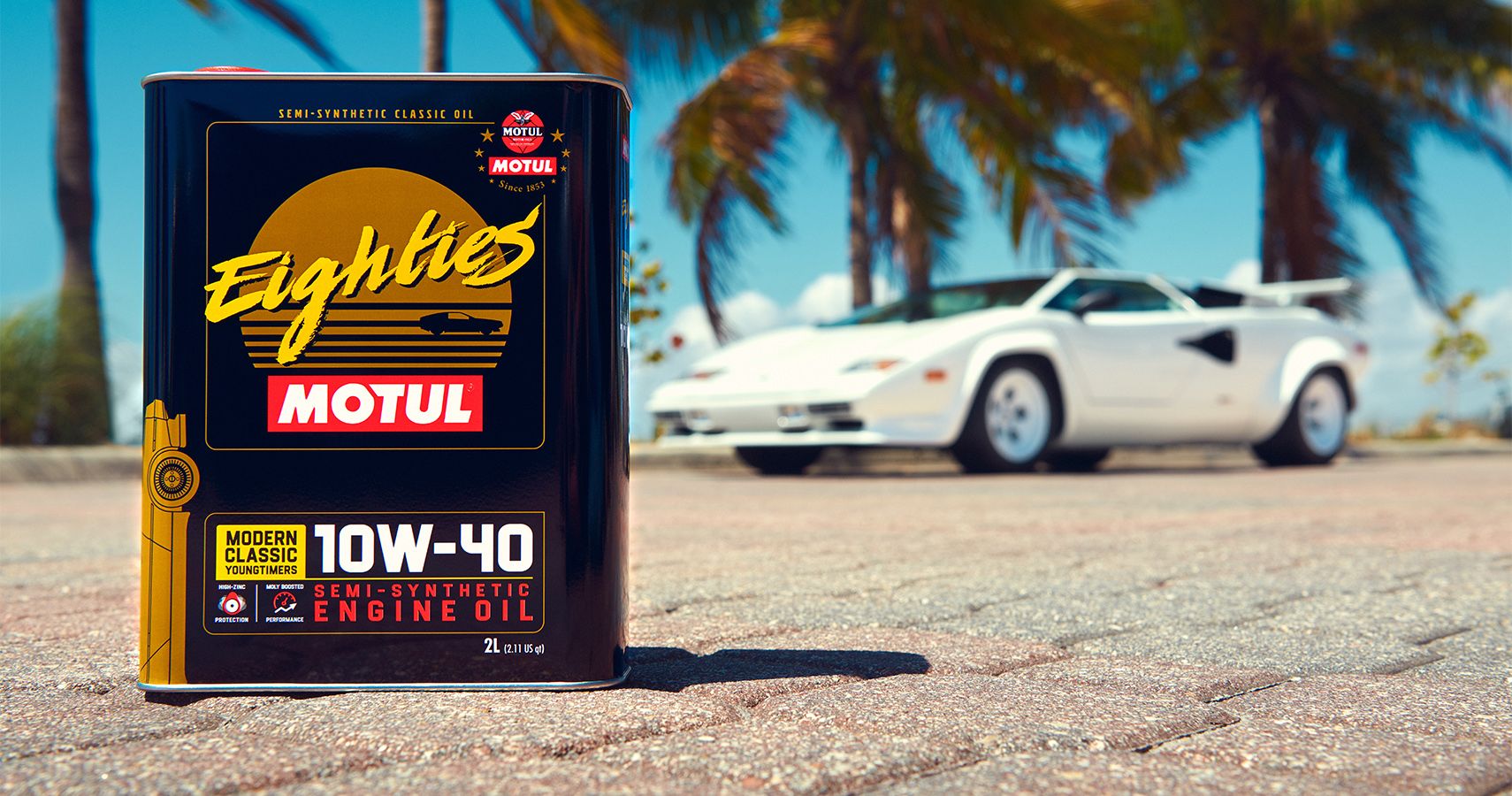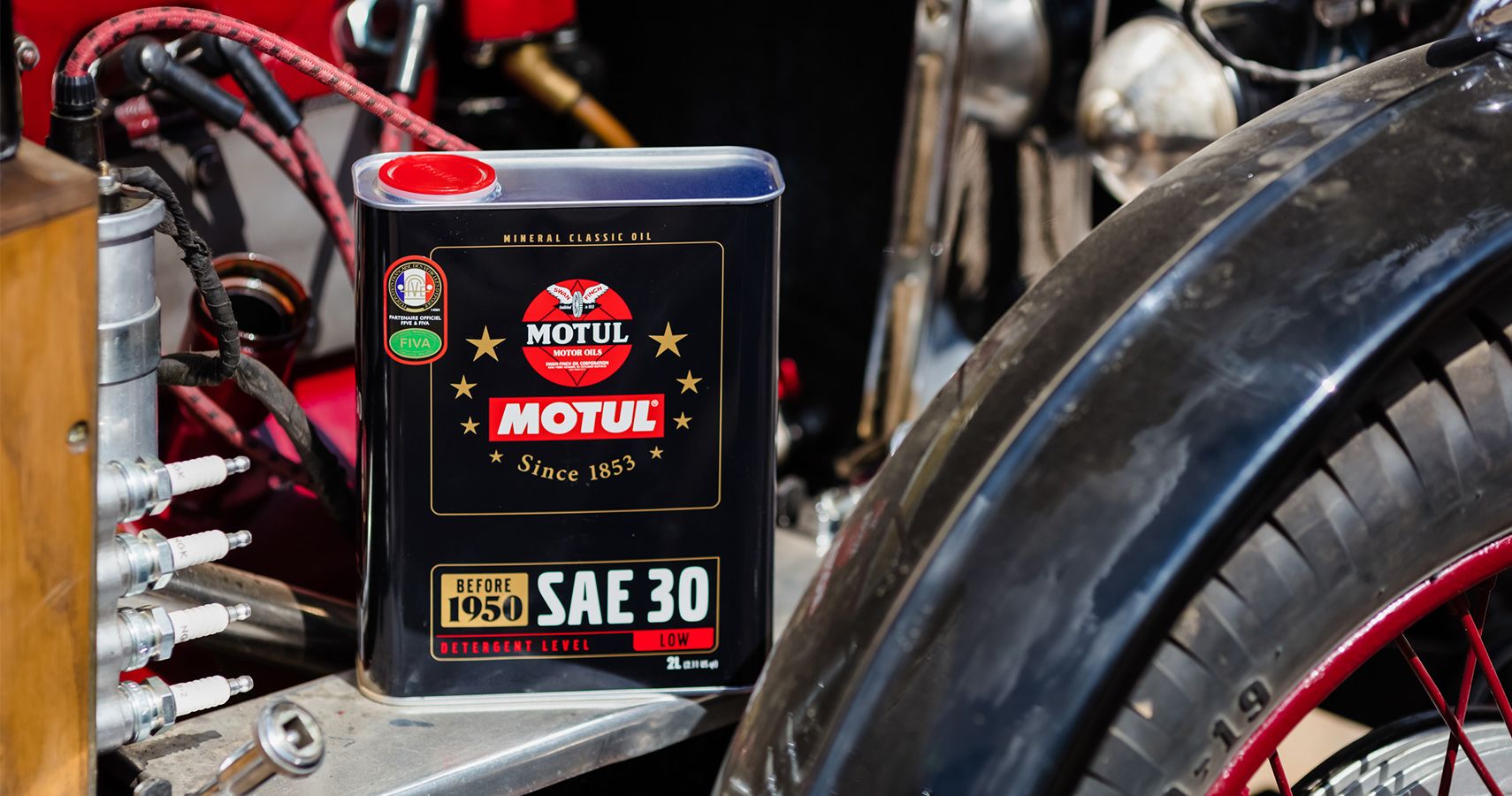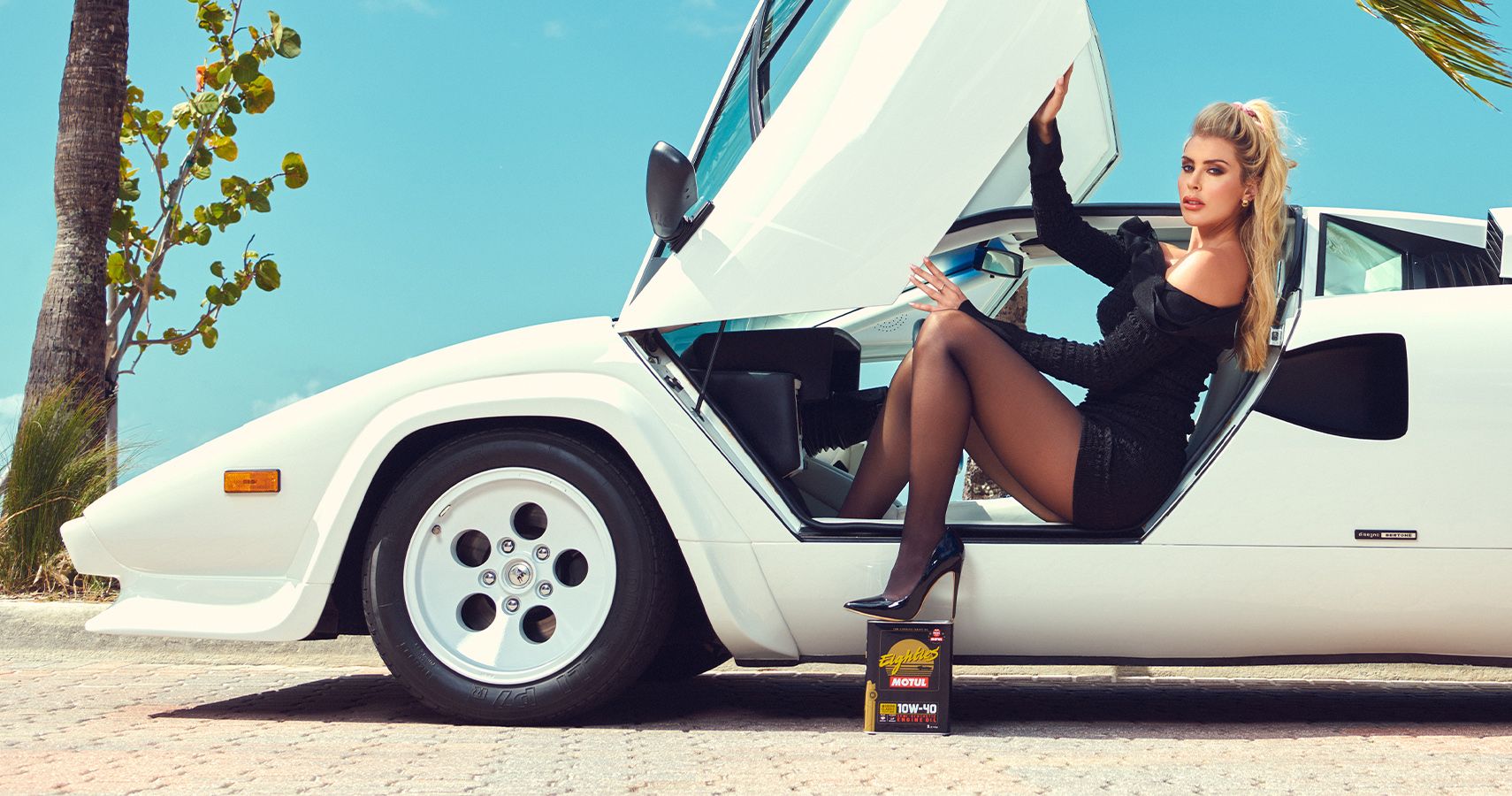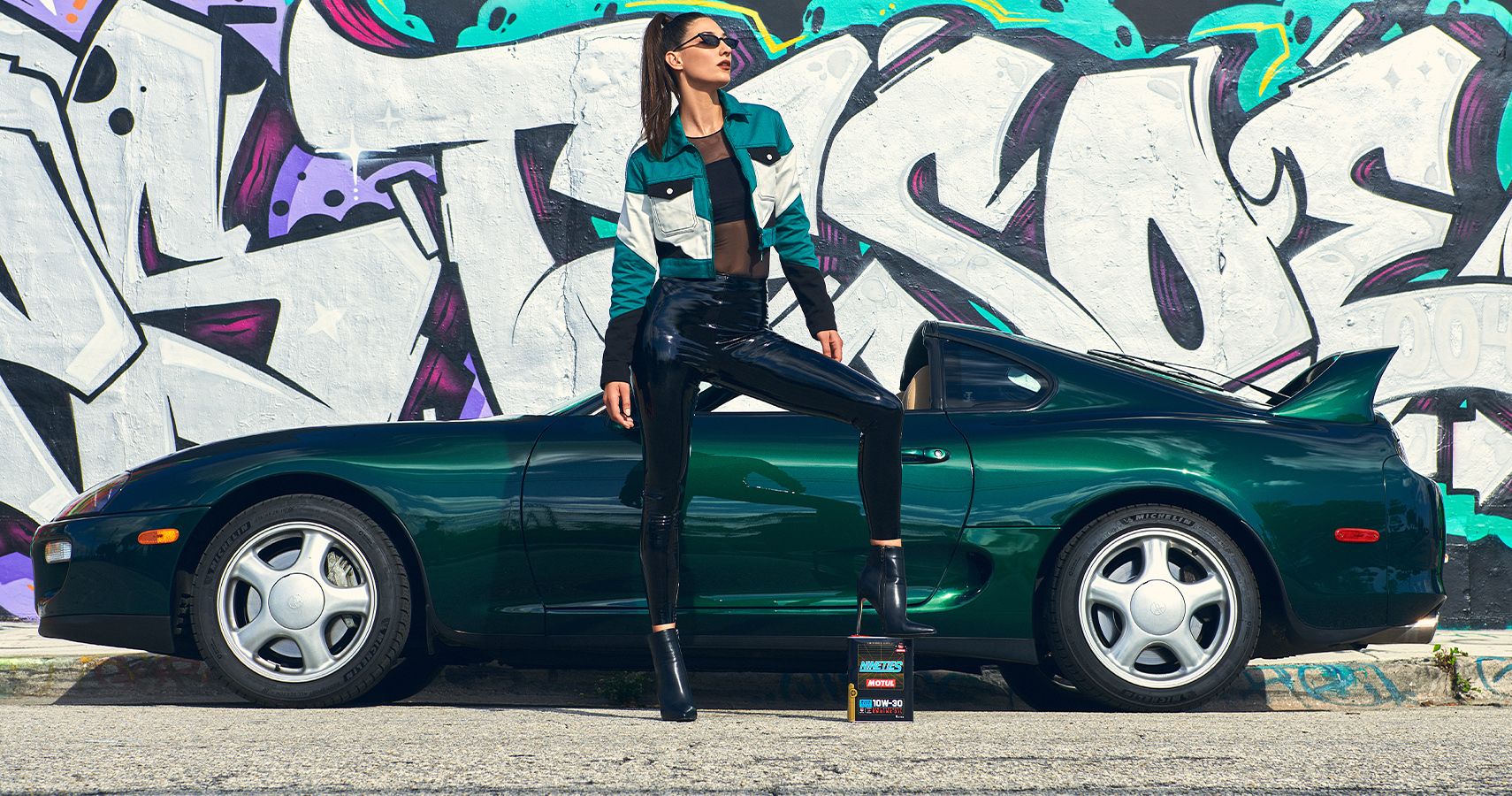The growing intensity of the collector car craze on display at meetups all over America has earned plenty of headlines over the past few months. The New York Times even covered the boom, while insurer-turned-lifestyle-brand Hagerty felt the urge to release its official "Hottest Cars of the Pandemic" list.
As collectors swoop up every classic make and model on Craigslist, the market run presents a wide range of obvious business opportunities—most notably leading to an expanding spate of online auction websites looking to improve upon the wild success of Bring a Trailer. But the effects trickle right through the entire automotive industry, all the way to often-overlooked yet critical elements like humble engine oil.
Of course, ask any enthusiast what oil they use and the reasons behind their choice always vary to an unbelievable degree. But now, Motul hopes to jump into the game and settle all those debates with the unveiling of a new period-inspired Classic Line of lubricants sold in metal cans with stylized graphics catering to every era and every engine type.
After the collection debuted, I spoke with Nicolas Demaria, Technical Support Manager for the Americas, about how Motul developed the new lubricant lineup with the modern American enthusiast in mind.
Demaria And Motul Have Their Eyes On America
Demaria joined Motul about a decade ago, having worked for Volkswagen and Mercedes-Benz before jumping into the lubrication world. For those readers unfamiliar with Motul, the lubricant firm hails from France but serves automakers and industries all over the globe.
"It’s been quite a long journey of technical support in the Americas," Demaria told me, "Mostly South America and Central America. Now I’m heading up north, where I’ll be joining the guys as Technical Support Manager for the Americas."
Motul's new Classic Line range of oils also focuses primarily on the US market, he explained, with a strong understanding of how zinc dialkyldithiophosphates—more conveniently known as ZDDP—dominates the discussion.
"We’ve been working with classic-specific lubricants for about 11 to 12 years now in Europe," Demaria recalled. "But what we did this time was to think absolutely about North American consumers, a lot about muscle cars. So that’s the reason why we tweaked the formulation a little bit. There’s always this thing about ZDDP in the United States. The more the better—at least, when it comes to certain minds."
Zinc in engine oil has been famously prioritized by owners of classic V8 engines, who need the element's protection for their flat-tappet camshafts. But Motul's Classic Line isn't strictly intended for V8-powered hot rods and also includes various weights and specific blends for cars built before 1950 and after 1950, as well as in the 80s and 90s.
Semi-Synthetics And Good-Old Dinosaur Guts
While the high-contrast marketing pics and retro-styled cans might seem like a bit of a gimmick used to make the range of different weights seem more diverse, Demaria explained how the ever-changing use of different materials within car engines over the years correspondingly dictates what kinds of oils owners should use today.
“The thing is, we wanted to make period-correct oil," he said. "So if you have a vintage or pre-war classic that has the old-time gaskets and seals, in those cases you cannot use semi-synthetic or synthetic oils. Of course, having the extra anti-wear protection is always beneficial, so these will have the ZDDP boost as well, but the SAE 30 and SAE 50 are mineral products. We have an SAE 20W-50 which is a classic performance; we named it performance because we have this huge amount of ZDDP plus a molybdenum boost to gain some efficiency and extra horsepower through friction- modifying lubricants."
The semi-synthetics within the Classic Line, meanwhile, include a range of weights: 15W-50, 10W-30, and 10W-40 to span all kinds of different years, makes, and models. After all, the modern collectible car boom includes everything from Jay Leno and his Duesenbergs all the way through to muscle cars from the 60s and 70s, European sports cars from the 70s and 80s, and Japanese imports from the 80s and 90s.
Protecting Collector Cars That Sit For Extended Periods
Regardless of what era (or eras) they prefer, anyone who parks their vintage car for the winter (or just drives semi-irregularly) should know that the worst engine wear occurs during that first startup, after oil has dripped off of cams and bearings down into the pan. For those engines in particular, Motul put together specific additive recipes in an attempt to combat this well-known cause for concern.
"As you know, the finished product is made out of base oils and additives," Demaria explained, "There are tackifier agents within the additive package that will give you that higher adhesion."
Here in Los Angeles, as Demaria will no doubt discover immediately once he moves, the non-stop parade of classic cars driven in daily traffic seems to include an absolutely absurd number of air-cooled Porsches (and fewer muscle cars than perhaps populate the rest of the country). So I had to ask if any of Motul's new Classic Line products were blended with Porschephiles in mind.
"All of these lubricants are prepared to work with air-cooled engines," Demaria responded. "Air-cooled engines were a big chunk of the European market back then, so we know that the oil needs to endure that kind of high temperature, so you will have the anti-oxidation capacity and the resistance to degradation in these new lubricants."
In fact, Motul recently announced a new partnership with Ruf Automobile to serve as the famous aftermarket Porsche constructor's official lubricant, and has also worked with Kremer Racing for more than a decade.
High ZDDP Affects Catalytic Converters For Later Models
Bringing up the use of zinc or ZDDP among a group of car collectors always starts an argument. Some will swear they need the extra protection while others think the issue is blown out of proportion—and for those who love their post-70s cars, especially here in California where stringent emissions regulations dictate the use of catalytic converters on many classics, zinc's tendency to fry cats is well-known. But Demaria told me Motul didn't tilt so strongly towards ZDDP that the zinc might damage emissions equipment on cars that aren't smog-exempt.
"With the regular levels of ZDDP, of this anti-wear extreme pressure agent," he said "We know they are safe and we know will not compromise protection of other functions that the oil has to do inside the engine. Let’s take it to the maximum and let’s fortify this with a different set of additives, as well. That’s where the molybdenum comes in."
Getting Specific About Those Flat-Tappet Cams
I'd heard that V8 engines with flat-tappet camshafts needed more zinc but I was willing to admit to Demaria that I wasn't entirely sure why. Luckily, it's his job to know just that.
"People end up confusing higher weight oil with better lubrication," he began. "You will always get this thing of, 'Put in a 60-grade or even a 70-grade,' where you normally wouldn’t need that high of a viscosity. The important thing about flat tappets and heavily loaded spring valves is you’re going to have rolling contact but also sliding wear. With all this sliding contact that you have between the cam and the tappet, if you don’t have sufficient anti-wear additives to cope with that effort, you will go through your cams in a heartbeat."
"When you look at European cars," he continued, "Overhead camshafts are a reality since the mid-70s and 80s for a lot of the OEMs. Whereas in the US, you still have this huge amount of V8s with central camshafts, side-valve actuation. And that’s where the ZDDP became so popular and so needed for so many people. It’s gotta be high ZDDP in order to keep the folks at ease and let them know that their flat tappets are not going to suffer any kind of wear, and then adding molybdenum, as well, as a synergistic component in order to boost efficiency."
Separating Marketing From The Product Itself
No doubt, the photos look good and the packaging design stands out from any average five-quart jug of oil at the nearest Pep Boys. But I seriously wonder whether a Lamborghini Countach owner would ever choose their own oil or just let their high-priced mechanic make the call. Regardless, I asked Demaria which oil he would recommend for the classic V12. Without hesitation, he replied, "For the Lamborghini, I would go with semi-synthetic 10W-40."
While I had him on the line, I also had to inquire about a professional recommendation for my own Porsche 914, which I'll hopefully have running one day soon with with a mildly enlarged Volkswagen Type 4 flat-four. Demaria needed more specifics before making a selection—always a good sign.
"Are you going to do anything with the original architecture of the engine," he asked, "Or is it going to be all standard measurements?"
I told him the build (as it's currently planned) will employ about four-millimeter bigger valves, a reground crankshaft, and a mild street performance cam.
"In this case, I would stay between the 10W-40 and the 15W-50," he advised. "If you had told me that you were going to be running very rich or that you were going to let the crankshaft run a little loose to gain some more horsepower, then I would say the 15W-50."
Spreading Motul's Bonafides From Europe To America
In his role as Technical Support Manager for the Americas, Demaria wants to keep things technical and throughout our conversation, he strove to communicate how much expertise Motul has baked into these oils—almost as if the marketing looks so good that it might distract from the perceived quality of the product itself. The Classic Line oils emerged not just from a keen eye on the collector car craze, but also from Motul's long history blending lubricants for classic cars all over the planet.
"We are the official partner of the International Federation of Ancient Vehicles," he said. "That’s the direct translation of FIVA. Every big concours d'elegance, every big classic car show has the stamp of this… If you think of the Historic Vehicle Association in the United States, FIVA is like the world version and Motul is their official partner."
"So that gave us access to a lot of the biggest collections in Europe," Demaria continued. "We do work with a lot of premium garages that take care of a lot of collections and also have classic car racing squads for all the different rallies in Europe. I don’t want this to sound like marketing bullshit, but there’s a lot of knowledge that came from the R&D guys and our technical department in Europe into making this oils safe and at the same time, very, very performant in these engines. From your experience in the field, to the paper, to the shelf for the customer to buy."
Sources: motul.com, the360mag.com, fiva.org, and historicvehicle.org.

